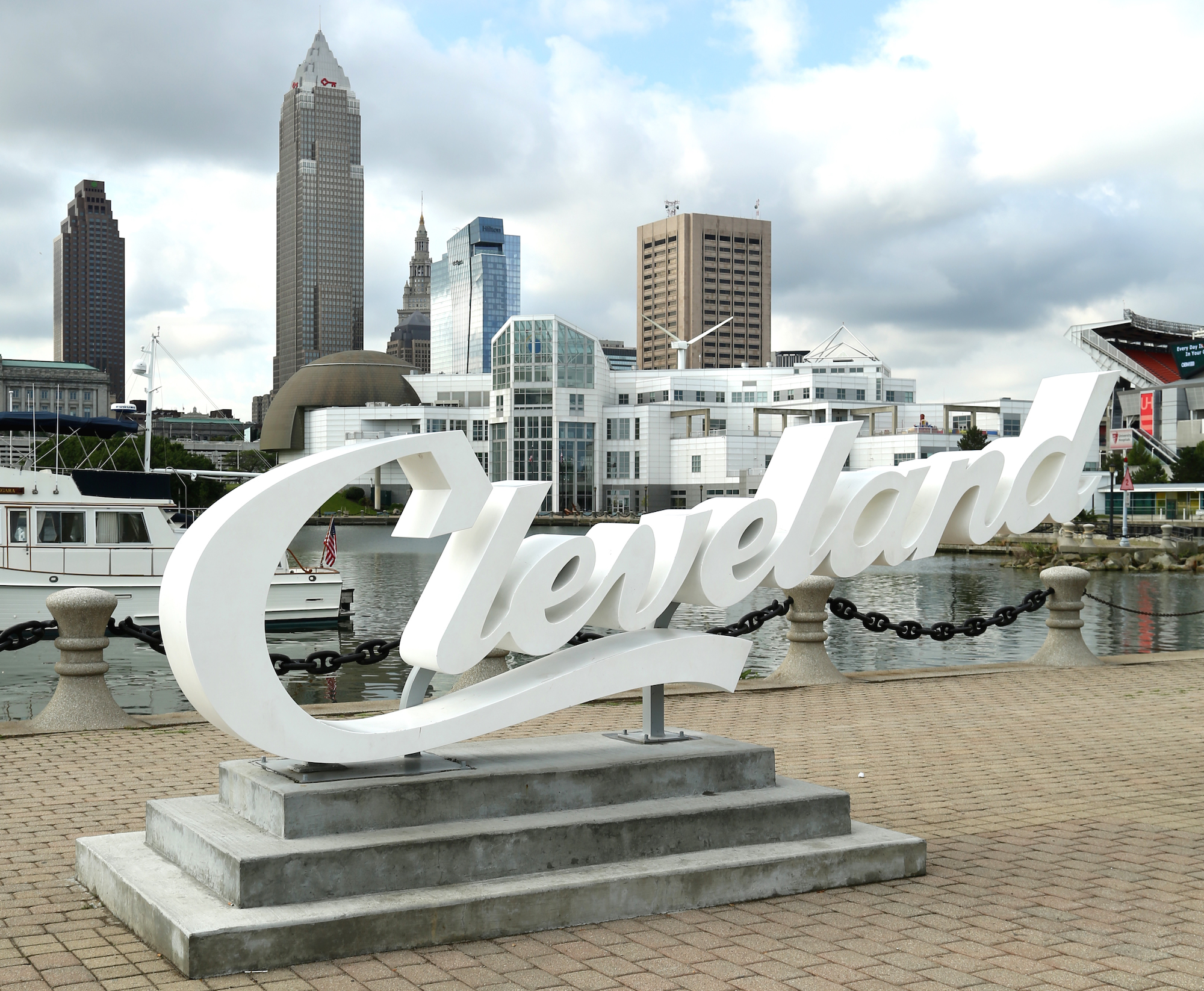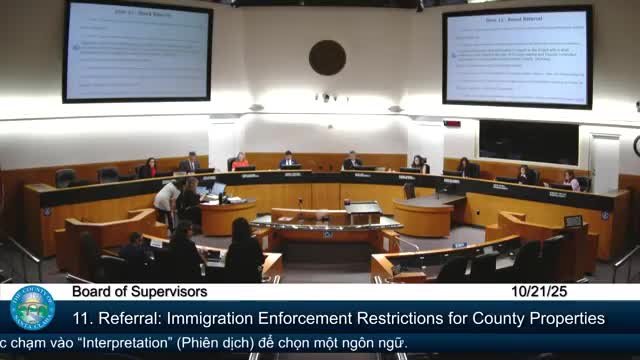Report on the Southeast Side Commercial Corridor Program Investment
Introduction and Overview
On October 22, 2025, the office of Mayor Justin M. Bibb announced a significant investment of $1,909,341.06 allocated to 29 projects under the Southeast Side Commercial Corridor Program. This initiative, a component of the Mayor’s Southeast Side Promise, is designed to counteract historical disinvestment and stimulate economic and community renewal. The program directly supports the advancement of several United Nations Sustainable Development Goals (SDGs) by fostering inclusive growth and urban revitalization.
Program Objectives and Alignment with Sustainable Development Goals
The program aims to create safe, vibrant, and economically resilient neighborhoods by investing in commercial corridors and community spaces. Its objectives are closely aligned with the following SDGs:
- SDG 8: Decent Work and Economic Growth: By providing funding and technical assistance to small businesses, the program fosters local entrepreneurship, creates employment opportunities, and promotes sustained, inclusive economic growth within the community.
- SDG 10: Reduced Inequalities: The initiative specifically targets a historically disinvested area and has enhanced its processes to improve access for small and minority-owned businesses, thereby addressing economic disparities and promoting equitable development.
- SDG 11: Sustainable Cities and Communities: The program’s focus on storefront improvements, vacant property stabilization, and public realm enhancements contributes directly to making urban settlements inclusive, safe, resilient, and sustainable. It seeks to restore community pride and build lasting infrastructure for future generations.
- SDG 9: Industry, Innovation and Infrastructure: By revitalizing key commercial corridors such as Lee Road, Kinsman Road, Miles Avenue, and Union Avenue, the program upgrades local infrastructure and supports the revival of neighborhood economies.
Implementation and Community Engagement
The Department of Economic Development relaunched the program in September 2025 with a refined model for equitable economic development. Key operational components include:
- Financial and Technical Support: The program offers a combination of grant funding and technical assistance for storefront improvements, white boxing of commercial spaces, acquisition and stabilization of vacant properties, and enhancements to public areas.
- Streamlined Access and Transparency: Recent program enhancements have simplified the application process for small and minority-owned businesses, expanded eligibility criteria, and increased transparency through direct City oversight.
- Community Partnerships: A strong community engagement strategy is central to the program, involving partnerships with local Community Development Corporations and City Council members to align strategies and provide robust support to applicants.
Grant Recipients
The funding has been awarded to a diverse group of 29 businesses and organizations, including restaurants, retail shops, health providers, and educational centers. The proposed recipients are:
- Grandma Ida’s Kitchen and/or designee
- House Party Construction LLC and/or designee
- Mt. Pleasant Barbecue and/or designee
- Jordan Community Residential Center dba Jordan Community Resource Center and/or designee
- A1 Top to Bottom, LLC and/or designee
- J&K Unlimited Enterprises Inc. and/or designee
- CMB Soul Food LLC and/or designee
- 4680 Breakfast Bistro LLC and/or designee
- 5th Avenue Fragrances, LLC and/or designee
- A to Z Health Provisions Inc. and/or designee
- Bottomline Barbershop LLC and/or designee
- Deja Vu Salon/Barber Inc. and/or designee
- Double Platinum Properties LLC and/or designee
- Exclusive Learners Language Academy, LLC and/or designee
- Ace-1national Trucking LLC and/or designee
- Kaba’s African Market Inc. and/or designee
- Mary J. Braids, LLC and/or designee
- Mass Orthopedic LLC and/or designee
- Satterwhite Beauty Bar L.L.C. and/or designee
- Stronghold Asset Management LLC and/or designee
- Tatt216 Studio LLC and/or designee
- Samone’s Southern Cuisine LLC and/or designee
- Virtue Holdings, LLC and/or designee
- Waterfall Publishing, LLC and/or designee
- Short Stop Upholstery LLC and/or designee
- K Royal LLC and/or designee
- Eaze Duz It LLC and/or designee
- Jud Lee Plaza and/or designee
- Affinity Alarm and/or designee
Conclusion: Strategic Importance for Sustainable Urban Development
The Southeast Side Commercial Corridor Program is a foundational element of Mayor Bibb’s broader Cleveland ERA agenda, which prioritizes citywide economic resurgence. By activating long-vacant spaces and improving commercial corridors, this investment builds momentum for lasting change. It serves as a practical model for achieving sustainable urban development by integrating economic growth (SDG 8), infrastructure improvement (SDG 9), inequality reduction (SDG 10), and the creation of sustainable communities (SDG 11).
1. Identified Sustainable Development Goals (SDGs)
The article addresses the following SDGs:
- SDG 8: Decent Work and Economic Growth
The core of the article focuses on driving “economic growth and community renewal” by providing significant financial investment ($1.9 million) to 29 small businesses. This initiative directly supports entrepreneurship and aims to create “a real path to prosperity,” which aligns with the goal of promoting sustained, inclusive, and sustainable economic growth.
- SDG 11: Sustainable Cities and Communities
The program’s stated aim is to “create safe, vibrant, and economically resilient neighborhoods by investing in commercial corridors and community spaces.” Actions such as “vacant property acquisition and stabilization” and “public realm enhancements” are direct efforts to make urban settlements more inclusive, safe, resilient, and sustainable.
- SDG 10: Reduced Inequalities
The program specifically targets Cleveland’s “Southeast Side,” an area explicitly noted for facing “decades of disinvestment.” By focusing resources on this community and enhancing access for “small and minority-owned businesses,” the initiative works to reduce economic and spatial inequalities within the city.
- SDG 9: Industry, Innovation, and Infrastructure
The article mentions that the program is part of a broader agenda for “industrial revival” and “government innovation.” The investment in revitalizing commercial corridors and stabilizing properties can be seen as building resilient local infrastructure and increasing the access of small enterprises to financial services, which is a key aspect of SDG 9.
2. Specific SDG Targets
The article’s content aligns with these specific targets:
- Target 8.3: Promote development-oriented policies that support productive activities, decent job creation, entrepreneurship, creativity and innovation, and encourage the formalization and growth of micro-, small- and medium-sized enterprises, including through access to financial services.
The Southeast Side Commercial Corridor Program directly embodies this target by awarding over $1.9 million in grants and providing technical assistance to 29 small businesses, including restaurants, barbershops, and health providers, to foster their growth and impact.
- Target 11.3: Enhance inclusive and sustainable urbanization and capacity for participatory, integrated and sustainable human settlement planning and management in all countries.
The program’s “strong community engagement approach, including partnerships with local Community Development Corporations and City Council members to align corridor strategies,” reflects the participatory planning and management aspect of this target.
- Target 10.2: By 2030, empower and promote the social, economic and political inclusion of all, irrespective of age, sex, disability, race, ethnicity, origin, religion or economic or other status.
The initiative’s focus on a historically disinvested area and its specific enhancements to “streamline access for small and minority-owned businesses” are direct actions to promote the economic inclusion of marginalized communities.
- Target 9.3: Increase the access of small-scale industrial and other enterprises, in particular in developing countries, to financial services, including affordable credit, and their integration into value chains and markets.
The program provides direct access to financial services (grant funding) for small enterprises, helping them improve their storefronts, acquire property, and stabilize their operations, thereby strengthening their position in the local market.
- Target 11.7: By 2030, provide universal access to safe, inclusive and accessible, green and public spaces…
The funding for “public realm enhancements” and the goal of creating “vibrant… community spaces” align with this target by aiming to improve the quality and accessibility of public areas within the targeted commercial corridors.
3. Mentioned or Implied Indicators
The following indicators can be used to measure progress:
- Total financial investment: The article explicitly states that “$1,909,341.06 million has been awarded.” This is a direct quantitative indicator of financial resources mobilized for local economic development.
- Number of supported projects/businesses: The article mentions that the funding was awarded to “29 projects,” providing a clear count of the small businesses and organizations receiving support.
- Activation of vacant properties: The program supports “vacant property acquisition and stabilization” and helps “activate long-vacant spaces.” The number of such properties revitalized serves as an indicator of urban renewal.
- Support for minority-owned businesses: The article highlights that the program has “streamlined access for small and minority-owned businesses.” The number or proportion of minority-owned businesses among the 29 recipients is an implied indicator of equitable development.
- Geographic focus on disinvested areas: The program targets Cleveland’s “Southeast Side” to address “decades of disinvestment.” The concentration of investment in specific corridors (Lee Road, Kinsman Road, etc.) is an indicator of efforts to reduce spatial inequality.
- Public and community space enhancement: The initiative funds “public realm enhancements” and aims to create “vibrant… community spaces.” The number of improved public spaces or the square footage of enhanced public realms can be used as an indicator.
4. Summary Table of SDGs, Targets, and Indicators
| SDGs | Targets | Indicators |
|---|---|---|
| SDG 8: Decent Work and Economic Growth | 8.3: Promote development-oriented policies that support productive activities, decent job creation, entrepreneurship, creativity and innovation, and encourage the formalization and growth of micro-, small- and medium-sized enterprises, including through access to financial services. |
|
| SDG 11: Sustainable Cities and Communities |
11.3: Enhance inclusive and sustainable urbanization and capacity for participatory, integrated and sustainable human settlement planning and management.
11.7: Provide universal access to safe, inclusive and accessible, green and public spaces. |
|
| SDG 10: Reduced Inequalities | 10.2: Empower and promote the social, economic and political inclusion of all, irrespective of… race, ethnicity… or economic or other status. |
|
| SDG 9: Industry, Innovation, and Infrastructure | 9.3: Increase the access of small-scale industrial and other enterprises… to financial services… and their integration into value chains and markets. |
|
Source: clevelandohio.gov







